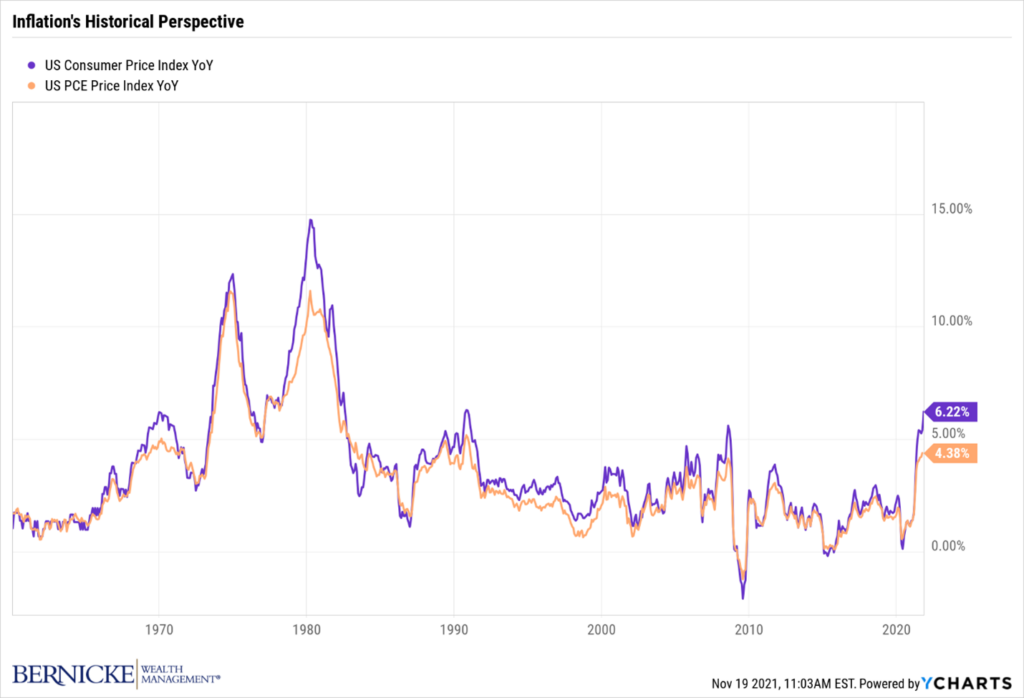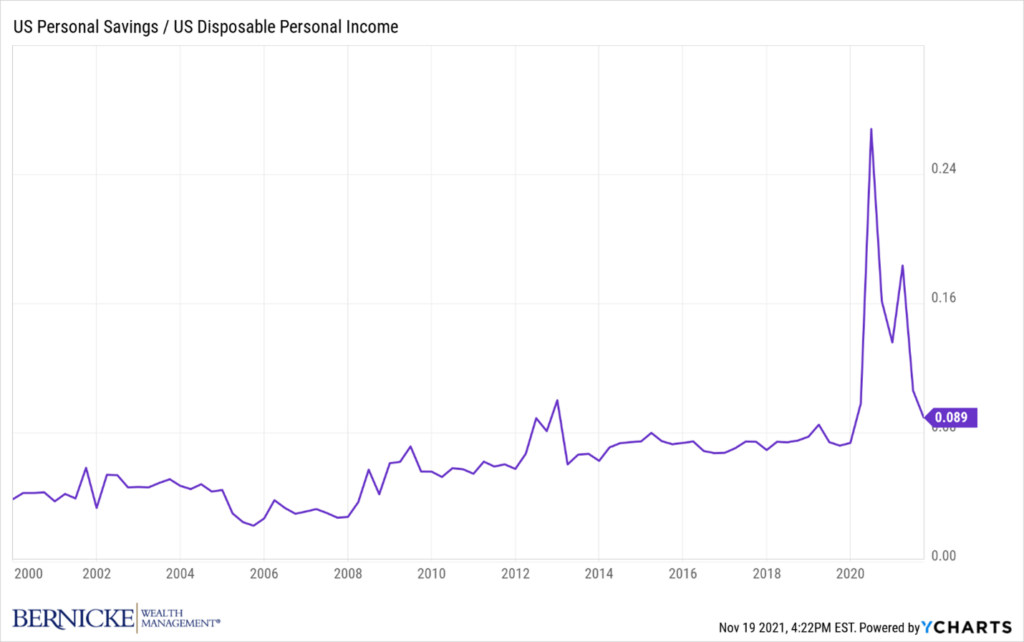For the very small percentage of the human race that has ever been to space (only 567 people can claim they’ve orbited the Earth), these individuals are some of the only people to have experienced what’s known as the Overview Effect. After seeing the entirety of our planet from a single vantage point, these astronauts have mentioned their perspective on what matters changes as they’re overwhelmed by the size of our planet and the vastness of space.
For us everyday citizens down here on Earth, it’s easy for us to get lost in the business of everyday life. After experiencing the birth of my third child (our first daughter!) a few weeks ago, taking a step back and looking at the big picture can be a healthy exercise, allowing your mind to reset and put the day-to-day noise into context.
With this Overview Effect in mind, I thought we could try to break through some of the economic noise and put a few of these hot topics into perspective.
Inflation
Gas prices are higher, cars are expensive (if you can even find one to buy), and the housing market is staying stubbornly hot. The U.S. recently experienced its highest inflation reading since the 1990s. There’s no question inflation is here, but will it stay heightened at this rate for longer than just the next 6-12 months? While we think inflation will hang around for longer than we initially thought, we still believe the odds of inflation normalizing into 2023 are more significant than inflation growing increasingly worse after the following year.

Even though we’re seeing inflation spike near-term, we’re not near the levels we saw when inflation was rampant back in the ’70s and ’80s. We’re also seeing signs that this holiday season could be peak inflation near-term. Oil prices have retreated from their highs as additional supply comes online outside of OPEC+. The Fed has begun its tapering program as markets have predicted a rate hike in the second half of ’22, and supply chain bottlenecks show signs of easing (something we’ll discuss more below).
The prices we see throughout our everyday lives often formulate opinions more than what general economic data would suggest. If you haven’t had to buy a car or a house recently, you may not feel inflation is all that bad. If you carry debt, this spike in inflation is actually a good thing as your debt becomes “cheaper” to pay off as inflation moves higher. Additionally, if you break down the components of inflation, you find that a vast majority of the year-over-year increase stems from energy and used car prices. Normalization of these two inputs would significantly ease the strain we’re seeing in the overall inflation picture.
Supply Chain
As I mentioned earlier, the supply chain bottleneck is showing signs of easing. Most notably, the logjam that is the Port of Los Angeles provided a positive update recently, saying the number of containers that have sat at the port for longer than nine days has fallen 29%. There are still 83 container ships off the coast of L.A. waiting to be unloaded, but the recently passed bipartisan infrastructure bill earmarks $17 billion to be sent to the nation’s ports ($500 million to the Port of L.A.) to help further reduce the bottlenecks plaguing this part of the supply chain.
Additionally, commentary from auto manufacturers during their recent quarterly earnings calls has been positive, citing their ability to obtain the parts required to return to full production across a number of their manufacturing plants over the next few quarters. Specifically, the computer chip shortage that has sidelined many cars from being shipped to dealerships is easing based on comments made by Toyota and General Motor’s leadership. A large part of inflation this year has been attributable to increased prices in used autos. Should new car supply come back online, this would help deflate used car prices and reduce inflation growth.
Labor Markets
Employers continue to struggle to fill positions with qualified candidates despite the enticements of increased benefits and wages. Job openings remain elevated near historical highs while labor participation remains stubbornly low. One factor used to explain why eligible workers may not return to the workforce was the enhanced unemployment benefits approved due to the pandemic. The assumption was once these benefits expired in September, workers would return to the workforce, but that hasn’t yet been the case. However, there may be a reason to suggest this could be changing soon.

The chart above shows the personal savings rate as a percentage of disposable income. This ratio gives us insight into how much extra money from their paychecks individuals are able to save. Over the last 18 months, it’s pretty clear that households were saving significantly more than usual when stimulus paychecks were showing up in bank accounts. Though more recently, this savings ratio has normalized. Consumers have also been more willing to leverage credit cards this year after deliberately paying down credit card debt throughout 2020.
One interpretation is that as savings rates decline and credit card balances increase, individuals will feel the need to return to work as they had before the pandemic. We still have the participation rate to contend with, though this may be more a function of demographics as older individuals accelerate retirement due to the pandemic. However, the key takeaway here is that pieces of consumer data relating to the labor market are beginning to normalize, which should alleviate some of the hiring pressures employers are experiencing.
Though, when we take a step back and look at the larger picture, I do believe there is a light at the end of the tunnel. There’s still plenty our economy needs to work through to get back to whatever we want to define as “normal.” Companies recently experienced a relatively strong earnings season, and consumers, despite depressed sentiment, are doing what they do best… consume! Retail sales are still high even though inflation is elevated.
We hope everyone has a wonderful and safe holiday season!




